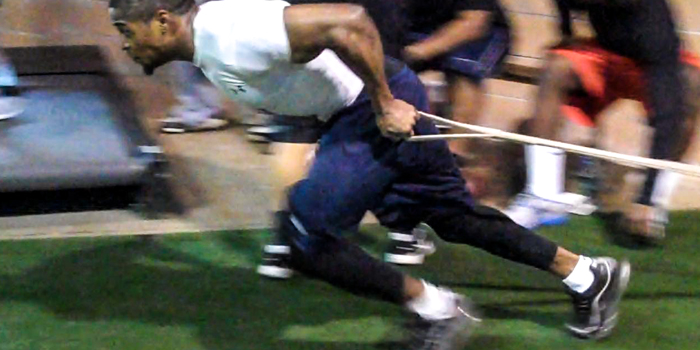
Speed kills. How many times have we heard that? Anyone who has worked with team sport athletes understands that in order to make it to a professional level, athletes MUST have the speed necessary to do so. I have worked with college football players that missed making it to the NFL strictly because they ran a bit too slow in their 40-yard dash. Sure, cases can be made that the 40-yard dash has little to do with the movement requirements of American football, but there’s no doubt that players are being scouted on their raw ability to move with speed. At the end of the day, the player who can move the fastest within the context of their sport will almost always be more successful. Therefore, regardless of the specific context, speed is a necessity in team sports.
For the purposes of this article, the discussion about speed will be limited to field and court-based team sport athletes. While hockey and water polo players must be able to display great movement speeds, other physics are involved that make the demands very different from land-based locomotion. The fastest way to move on land is to sprint in a linear direction. For this reason, we will specifically consider the case for linear sprint training for team sport athletes.
PART 1: Should I Lift or Should I Sprint — The Case for Strength
In linear sprinting, there are typically three phases that are accounted for: the start, acceleration, and maximum velocity.
The Start
The initiation of a sprinting motion typically requires a great deal of explosive and starting strength. In track and field, the start happens from being positioned on blocks. For team sport athletes, however, the start can happen from a variety of different positions. Examples of drills to use can include a 2-point start, 3-point start, starting from a push-up position, or even starting by turning to the side (using a hip turn) or starting to the rear (using a drop step) (6). No matter what the starting position is, athletes must be able to get into a proper acceleration position and overcome the forces of their own body weight and inertia to explode into a sprinting motion.
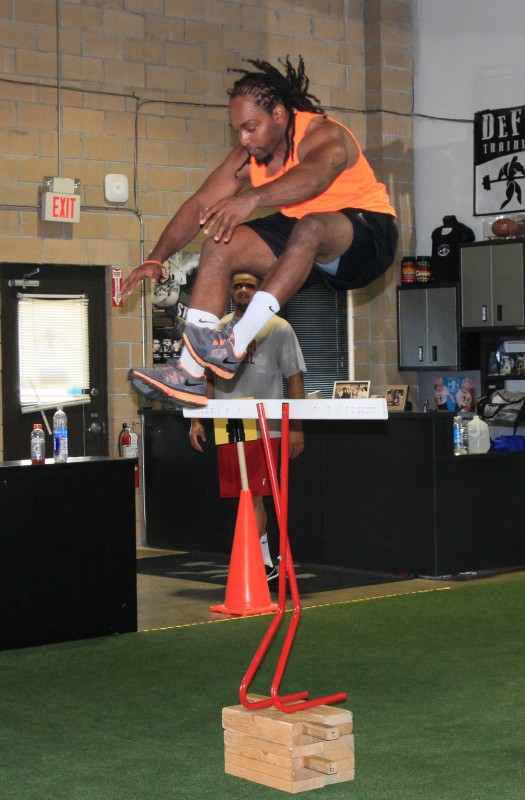
Acceleration
Team sport athletes make their money with being able to accelerate effectively. Sprinting actions in team sports typically occur within distances of 10-30 meters (or 10-30 yards). There is one particular difference between acceleration training in team sports versus track and field. In the 100-meter event, for example, the sprinters purposely attempt to spread out how long they are able to accelerate so that they reach top speed later in the race (around 60-80 meters) and preserve energy. Team sports, on the other hand, have to achieve the highest levels of acceleration as quickly as possible. Soccer players don’t have time to build up acceleration gradually because they must react to their opponents or the ball. They must increase their rate of speed very quickly within relatively short distances. So when it comes to training speed for the team sport athlete, the vast majority of training time should be spent on acceleration training in shorter distances of 10-30 meters or yards (14).
Maximum Velocity
Maximum velocity sprinting occurs when an athlete has reached his/her highest possible sprinting speed. In track and field, the sprinter who can reach top speed at the right moment and sustain it for as long as possible will be the first one across the finish line. Although environments of maximum velocity running are not very common in team sports, incorporating maximum velocity drills in training can provide for a training stimulus unmatched by any other activity. It can be argued that no other form of training is quite as simultaneously taxing on the central nervous system and the muscular system (9, 14).
Where in the World is the Sprint Training?
The interesting irony is that every sports coach demands great speed of their players and yet true sprint training is scarcely seen in strength and conditioning practice. The reason seems to be a lack of education where many coaches feel that performing high volumes of running with maximal effort is enough to develop speed qualities. It is commonplace to find coaches rapidly rotating through players with a wide variety of different “speed” drills where very little rest and recovery is taking place. The reality is that true speed development MUST occur in the absence of fatigue. The great sprint coach Charlie Francis was adamant about this: if the athlete is getting tired, then by definition he/she is unable to operate at maximum output ability (4).
True speed training must occur with very high intensities (i.e. 95-100% of best sprint time) and full recovery. The simplest rule of thumb in relation to recovery time between sprinting efforts is that 30-60 seconds should be taken for every 10 meters or yards being covered in the sprint (14). For example:
- 10 Meters/Yards: 30-60 sec. rest
- 20 Meters/Yards: 1-2 min. rest
- 30 Meters/Yards: 90 sec-3 min. rest, etc.
Let’s bring back our old friend the SAID principle. No activity is quite as capable of developing total body acceleration and speed to the same degree as performing pure sprint work. There is an obvious reason why this is the case. In part two of this article series I discussed the concept of velocity-based training (VBT) and how velocity is commonly measured using meters per second (m/s). The fastest form of lifting weights is through Olympic lifting, which can produce over 1.0 m/s even with moderate to heavy loads. Jumping exercises and plyometrics can produce takeoff velocities well over 3.0 m/s. But in elite level sprinters, horizontal velocity of movement can exceed 6.0 m/s in just two steps after coming out of the blocks. At maximum velocity, elite sprinters are capable of achieving horizontal movement velocities of 12.0 m/s or higher (16)! So when it comes to speed, nothing is possibly as specific to developing it as pure sprint training is.
To Be Fast, You Must Be Relaxed
There is a paradox with sprinting where overly high levels of effort often lead to worse sprint times. This is because sprinting requires very high levels of coordination that rely on the ability of the athlete to be explosive when necessary but also relaxed when needed. It has been said that elite level athletes are capable of relaxing their muscles nearly 200% faster than novice athletes. This indicates that the speed of muscle relaxation is just as important as the speed of muscle contraction (3).
I heard the sprint coach Tony Veney reference a lesson that he learned from great track and field coach Dan Pfaff saying, “Anyone can run. But not everyone can sprint.” Sprinting is a complex skill in which rhythm, relaxation, power, and speed all come together in harmony. Form and technique can separate the fast from the slow and it can also help reduce stress on the body and prevent injury. It is outside the scope of this article to provide an in-depth analysis of proper sprinting technique but the reader is drastically encouraged to find resources that provide this information.
Use Time to Understand Progress
When performing speed work it is vital to gain an understanding of how fast the athletes are actually moving. Thus, it is paramount to find a way to time the sprint efforts and distinguish how fast an athlete really is. In the parameters of sprint training, the intensity is based on the velocity achieved — not on how much effort is put into the sprint. The simplest form of timing sprint efforts for coaches is by using a stopwatch. However, stopwatches are heavily rooted in human error and often depict an unrealistic image of how fast the athlete is actually moving. If the funds allow for it, acquiring a fully automatic timing (FAT) system, in which the start AND the finish are electric, can pay huge dividends to a sprint-training program. It has been said that the accepted margin of error between fully automatic timing and stopwatch timing is around 0.24 seconds (14). That means that if your American football receiver was timed at a 4.48-second 40-yard dash using a stopwatch, it’s very likely that his true time using a FAT system would be around 4.72 seconds! While a 4.72-second 40-yard dash seems slow by societal standards, it is a more accurate indication of how fast the athlete is really running.
Exercises That Can Translate to Improvements in Sprinting
Taking into consideration the three different phases of sprinting discussed above (starting, accelerating, and running at maximum velocity), let’s discuss some possible ways to incorporate resistance training and explosive activities to where they can help assist athletes in different phases of sprinting. James “The Thinker” Smith and Derek Hansen both explain how training at certain joint ranges of motion, in addition to the overload being applied, can have an effect on enhancement of certain sprint phases (5, 14).
Exercises to Improve the Sprint Start
Resistance exercises and jumping/throwing exercises that have deeper knee bends and overall greater range of motion will positively influence starting ability and early acceleration (10-20 meters or yards). Exercises performed from a static start (from a dead stop) and in a very explosive manner also seem to have more significance. Performing a barbell box squat with a 3-second pause on the box and 90-degree knee bend using the dynamic effort method would be an example of such an exercise. Another example could be a squat jump holding dumbbells where the athlete pauses for 3 seconds at the bottom of the squat before jumping as high as possible.
Exercises to Improve Acceleration
Resisted sprinting (through use of a sled, hill or pulley system) and jumping/throwing exercises that have a more moderate knee bend (greater than 110 degrees) can have some carry over to late acceleration sprinting (over 20 meters or yards). Multiple broad jumps, upwards of 5-10 in a row, and broad jumps into medicine ball throws are examples of jumping and throwing exercises that can aid in developing acceleration. Sled-based exercises performed for speed like prowler pushes can expose athletes to early acceleration angles and drive mechanics for prolonged time periods similarly to hill sprints or resisted sprints.
Exercises to Improve Maximum Velocity
As might be expected, the only exercises that really transfer to maximum velocity sprinting are to perform sprinting-based drills. Exercises that feature gradual building up of speed to where maximum speed is achieved in a more relaxed nature (known as “flying” sprints where top speed is reached “on the fly”) and also drills that teach the athlete how to “shift gears” or change their speed effort. Flying sprints could be performed by building up speed for 20-30 meters or yards and then sprinting at full speed for an additional 20-30 meters or yards. Speed change drills could include 20 yards of sprinting at around 90% speed, then immediately shifting to 95-100% speed for the next 20 yards, and finally down shifting to 90% speed again for another 20 yards – a total of 60 yards of sprinting above 90% speed (4).
The next best step in trying to influence maximum velocity sprinting is to use plyometric drills with very minimal ground contact (<0.25 seconds) and maximum intensity like depth jumps, high-intensity pogo jumps, bounding, or depth jumps.
Integrating the Force-Velocity Curve Into Training
It is clear is that strength, power, and speed training are very much intertwined. In part two I discussed the force-velocity curve and how different activities fall along the continuum in different ways. Maximum strength is at the far left of the continuum (very high force), maximum speed is at the far right of the continuum (very high velocity) and all forms of maximum power fall in between.
So the question still remains: should I lift or should I sprint? By now the answer should undoubtedly be, “You should do both!” All forms of training along the force-velocity curve serve a fundamental purpose. So, yes, we should lift AND sprint…and jump, throw, Olympic lift, etc. The new question then becomes: how much should I do?
PART 2: Should I Lift or Should I Sprint — The Case for Strength
This is where the art of coaching comes into play. The coach must decide what qualities are important for the athlete being coached. How can the athlete improve in the respective sport and what qualities must serve as fundamental or foundational? Maximum strength is certainly an important foundational quality but so is acceleration ability. Kids can sprint almost as early as they can walk. So why can’t we develop strength in conjunction with speed in our youth athletes? This is a topic that Derek Hansen speaks about very regularly. Power can be developed early through basic jump training and medicine ball throws. Virtually all qualities along the force-velocity curve can be trained early in some capacity and with relatively low skill requirement.
Progress from General to Specialized Training
The coach must find ways to build a solid foundation of force, power and speed qualities and then gradually shift the attention more to certain points of the curve as the athlete advances and becomes more specialized in his/her sport. For example, larger athletes in contact sports like American football or rugby should start to spend the majority of their total training time to the left and middle of the force-velocity curve (strength and power) while soccer players and American football skill players should shift their total training in favor of the right of the curve (speed).
Different phases of the training year will also dictate the attention to certain qualities. Soccer players may spend the bulk of their total training time on high volumes of sprint work, but in the off-seasons they may lower the sprint work in favor of raising the volume of lifting and strength work. This concept is referred to as Vertical Integration and was made popular by the sprint coach Charlie Francis (4). Essentially, all forms of training (strength, power, speed, etc.) are present at all times throughout the training year but the volume of work dedicated to each element will differ depending on the focus of a training cycle or time period in the year.
While one or a few training elements are being developed, the others are performed with minimal volume in hopes of being maintained. Elements like speed and power are always performed at high intensities (i.e. 95+% of best times for sprinting or 90+% of highest vertical jump) and the volumes will vary to account for the other training being performed. This style of training has also been referred to as complex-parallel programming.
Understand the Capacity for Volume
Using a vertically-integrated approach, the coach must take caution in tracking and observing the volume of total work being done in each session. Charlie Francis referred to a “fill the glass” concept where the body is likened to a glass of water. You can only fill the glass so much before it overflows and spills, which is synonymous with how the body can only handle a certain amount of work each day before it’s gone overboard. In this way, often doing less total work but doing it at a higher quality will reap the greatest rewards.
Looking Ahead
Overall, the purpose of this article series was to take a very brief look at the importance of strength, power and speed work and how they interact with each other. It is encouraged that all readers take it upon themselves to learn the intricacies of different training methods. There is an abundance of literature discussing these concepts in much greater depth than the scope of this article series. Go forth and learn all that you can. The athletes will thank you.
References
- Baker D. Using Strength Platforms for Explosive Performance. In: Joyce D, Lewindon D, editors. High Performance Training for Sports. Champaign (IL): Human Kinetics; 2014. p. 127-144.
- Cormie P, McGuigan MR, Newton RU. Adaptations in athletic performance after ballistic power versus strength training. Med Sci Sports Exerc. 2010;42(8):1582-98.
- Dietz C, Peterson B. Triphasic training: A systematic approach to elite speed and explosive strength performance. Bye Dietz Sport Enterprise; 2012.
- Francis C, Patterson P. The Charlie Francis Training System. TBLI Publications; 1992.
- Hansen D. Successfully Translating Strength Into Speed. In: Joyce D, Lewindon D, editors. High Performance Training for Sports. Champaign (IL): Human Kinetics; 2014. p. 145-166.
- Jeffreys I. Gamespeed: Movement training for superior sports performance. Monterey (CA): Coaches Choice; 2010.
- Jeffreys I, Moody J, editors. Strength and Conditioning for Sports Performance. New York (NY):Routledge; 2016.
- Kraaijenhof H. Muscle Fiber Specific Training. In: Thome M, DeMayo J, White A, editors. Central Virginia Sport Performance: The Manual (Vol. 1). Richmond (VA): Central Virginia Sports Performance; 2016.
- Kraaijenhof H. What We Need Is Speed: Scientific Practice of Getting Fast. Ultimate Athlete Concepts; 2016.
- Mann B. Velocity-Based Training In Season. In: Thome M, DeMayo J, White A, editors. Central Virginia Sport Performance: The Manual (Vol. 1). Richmond (VA): Central Virginia Sports Performance; 2016.
- Markovic G. Does plyometric training improve vertical jump height? A meta-analytical review. British J Sports Med. 2007;41(6):349-55.
- Newton RU, Rogers RA, Volek JS, Häkkinen K, Kraemer WJ. Four weeks of optimal load ballistic resistance training at the end of season attenuates declining jump performance of women volleyball players. J Strength Cond Res. 2006;20(4):955-61.
- Simmons L. Westside Barbell Book of Methods. Westside Barbell; 2000.
- Smith J. Applied Sprint Training. James Smith; 2014.
- Stone MH, Cormie P, Lamont H, Stone M. Developing strength and power. In: Jeffreys I, Moody J, editors. Strength and Conditioning for Sports Performance. New York (NY):Routledge; 2016.
- Strength Power Speed Web site [Internet]. British Columbia (CA): Strength Power Speed: High Performance Training; [cited 2016 Oct 23]. Available from: http://www.strengthpowerspeed.com/the-complete-system/
- University of Minnesota Duluth Web site [Internet]. Duluth (MN): University of Minnesota Duluth; [cited 2016 Oct 23]. Available from: http://www.d.umn.edu/~dmillsla/courses/motorlearning/documents/chapter03f2012.pdf
- Verkhoshansky Y, Verkhoshansky N. Special strength training: manual for coaches. Rome (IT): Verkhoshansky; 2011.
- Verkhoshansky Y, Siff MC. Supertraining. 6th ed. Verkhoshansky; 2009.
- Yessis M. Explosive Plyometrics. Ultimate Athlete Concepts; 2009.









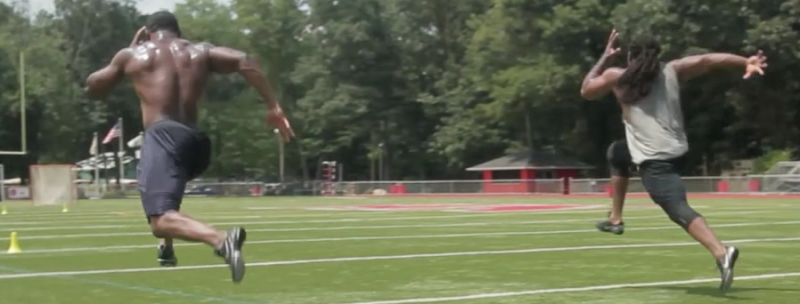
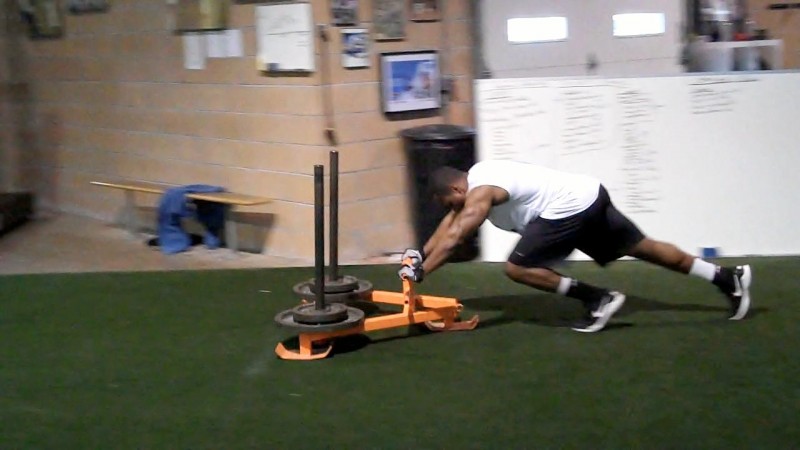
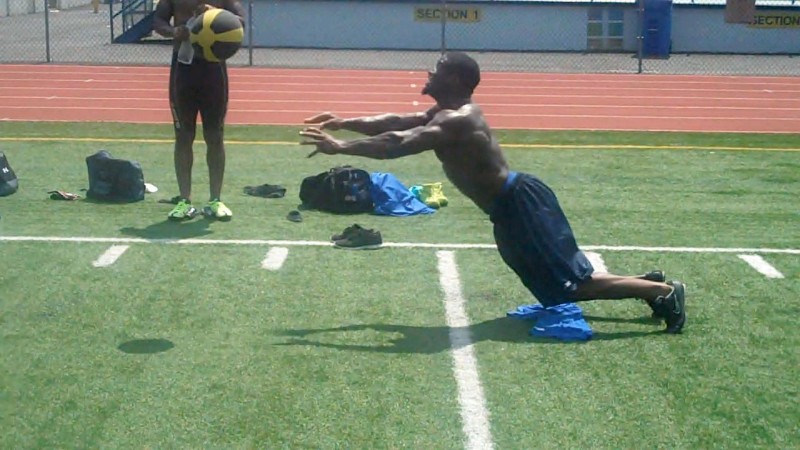
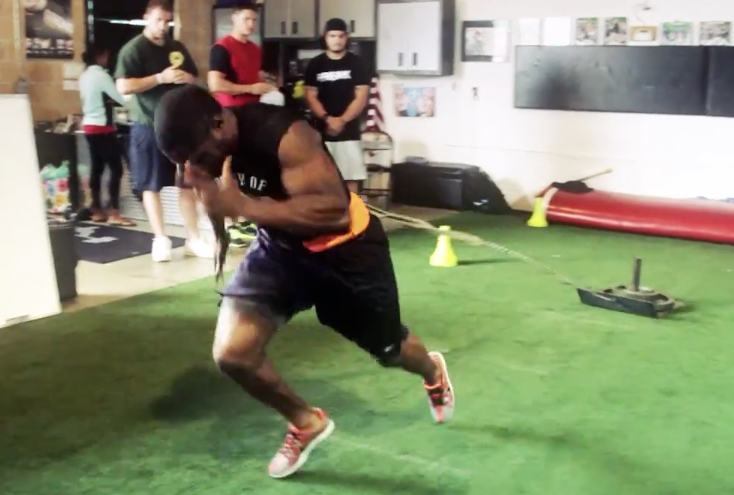
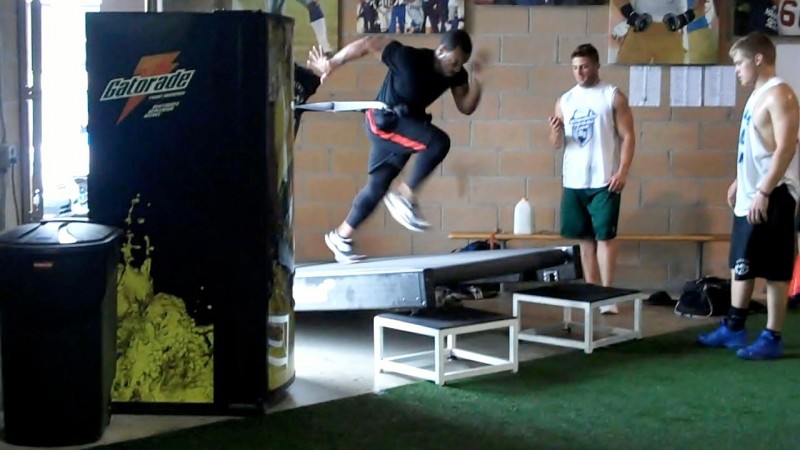

4 Comments